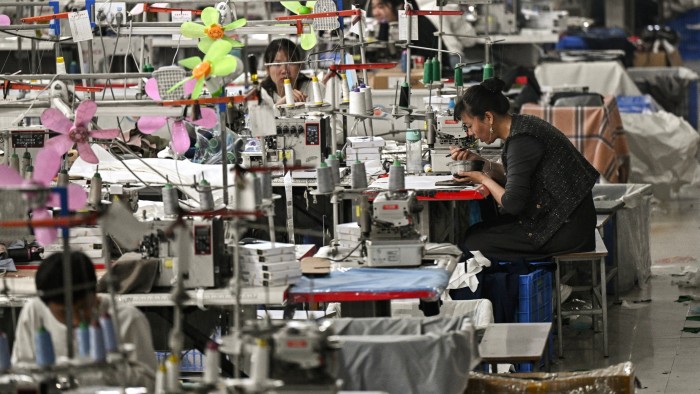Unlock the White House Watch newsletter for free
Your guide to what the 2024 US election means for Washington and the world
Donald Trump said on Thursday he would impose an additional 10 per cent tariff on imports from China and press ahead with levies on Mexico and Canada from next week, raising the spectre of a global trade war.
The president had halted his proposed tariffs on Mexico and Canada earlier this month, just hours before they were due to begin, giving the US’s two biggest trading partners a month-long reprieve.
But in a post on Truth Social on Thursday, Trump wrote: “The proposed TARIFFS scheduled to go into effect on MARCH FOURTH will, indeed, go into effect, as scheduled.”
The president added that he also planned to hit China with an additional 10 per cent levy on March 4, on top of 10 per cent tariffs that he imposed this month.
Trump said that his plan for sweeping “reciprocal” tariffs, unveiled this month and affecting countries and products around the world, would go ahead as planned on April 2.
Following Trump’s latest threat, China’s offshore renminbi weakened 0.3 per cent to Rmb7.289 versus the dollar. The dollar climbed 0.6 per cent higher against a basket of other major currencies.
Trump’s remarks are the latest salvo in the aggressive trade policy his administration has pursued since re-entering the White House in January. They increase the danger of a wider trade war that risks inflicting significant damage on the global economy.
The Chinese embassy in Washington criticised the new tariffs, saying there were “no winners” in a trade war.
“The unilateral tariffs imposed by the US will not solve its own problems, nor will it benefit the two sides or the world,” said Liu Pengyu, spokesperson for the Chinese embassy in the US. “China calls on the US to correct its wrongdoings.”
Canadian Prime Minister Justin Trudeau said his country would respond to any “unjustified tariffs” with a “strong, immediate and certain answer”. He added that Canada would in response immediately impose levies on $30bn worth of goods imported from the US.
Trump’s comments on Thursday marked an apparent reversal from remarks he made on Wednesday, when he said that the levies on Canada and Mexico would take effect on April 2, suggesting a possible delay.
His latest push for tariffs to take effect on March 4 — the day he is scheduled to address a joint session of Congress — is likely to trigger a diplomatic rush to try to stop the measures over the next few days.
A high-level delegation of Mexican officials will visit Washington on Thursday to meet US secretary of state Marco Rubio to discuss security co-operation.
The new tariff on China marks an escalation from the 10 per cent levy Trump announced last month, which was intended to pressure Beijing to crack down on groups that export chemicals used to make Fentanyl.
Over the past month, Beijing has been trying to ascertain whether Trump wants to negotiate a narrow trade deal or a more comprehensive agreement with China.
Chinese officials and government advisers have informally signalled that Beijing would be willing to purchase more US products to cut the trade deficit between the two countries.
They have also said Chinese companies could invest in the US to create as many as 500,000 jobs, according to people familiar with the matter.
But the two sides have not yet held any substantial talks on trade.
The announcement of the additional tariffs on China came the day after the Senate confirmed Jamieson Greer to serve as the US trade representative. The Chinese embassy in the US has been contacted for comment.
Additional reporting by Christine Murray in Mexico City







